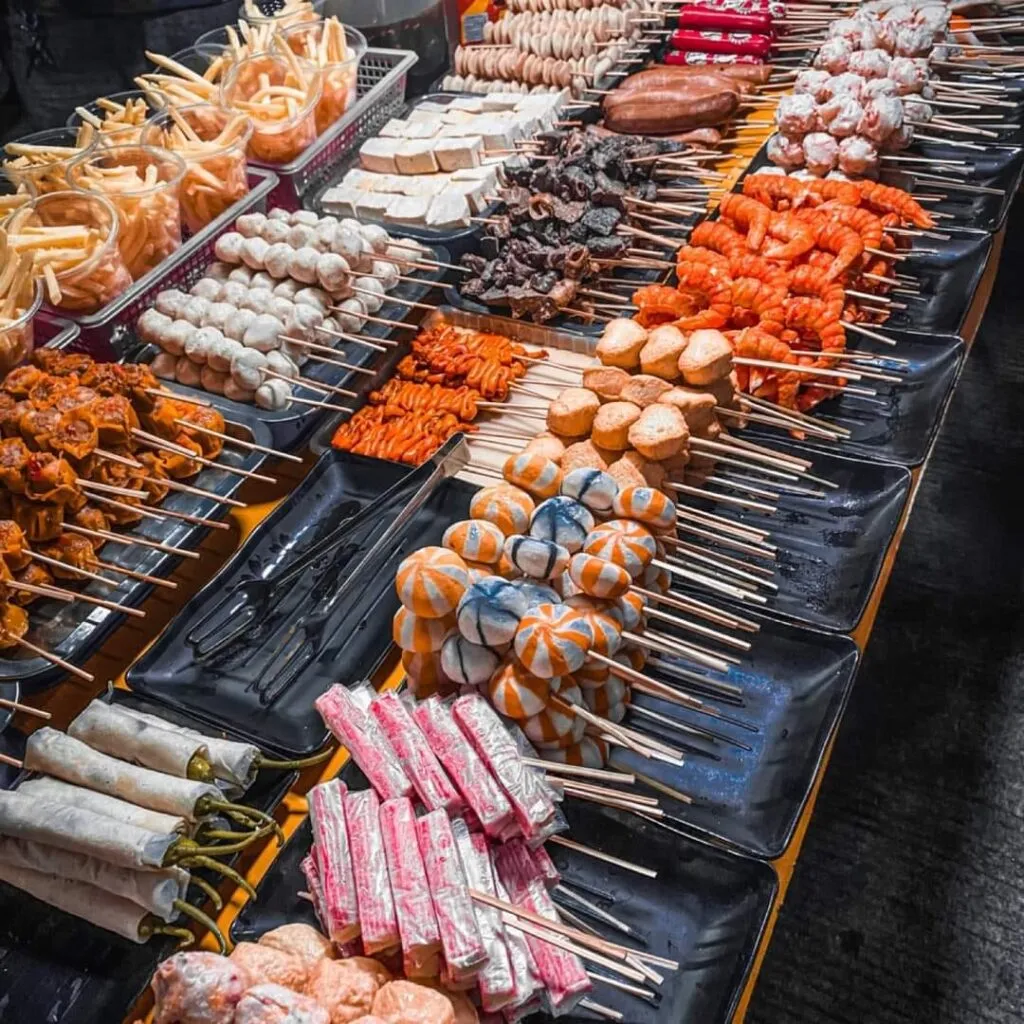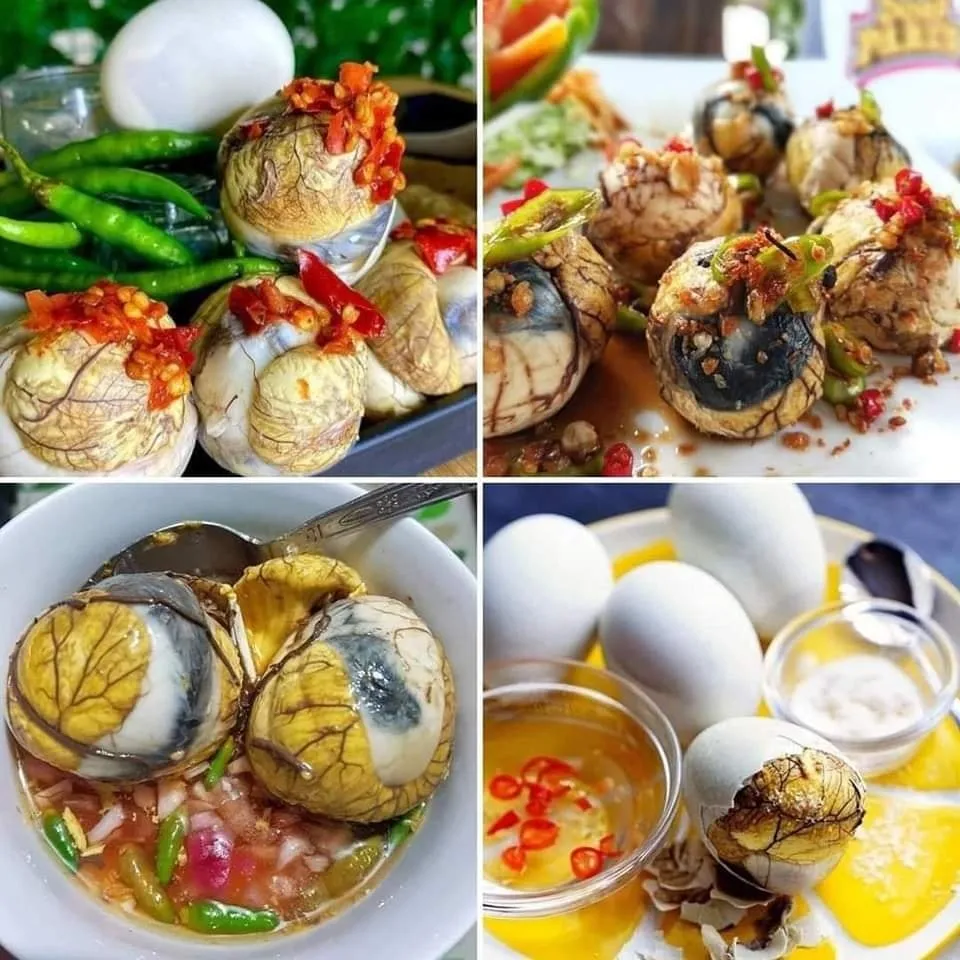
Filipino street food is a vibrant and diverse aspect of the Philippines’ rich culinary landscape. From bustling urban centers to quiet provincial towns, street food vendors offer a tantalizing array of snacks and meals that cater to every palate. Whether you are a local or a visitor, the experience of sampling Filipino street food is an adventure that engages all the senses. The sizzling sounds of grilling meat, the enticing aroma of fried delicacies, and the colorful displays of sweet treats make street food a beloved part of Filipino life.
Street food holds a special place in Filipino culture and daily life. It is not just about quick and affordable meals; it is a reflection of the Philippines’ history, creativity, and community spirit. Many Filipino street foods have roots in traditional recipes passed down through generations, while others showcase the country’s ability to innovate and adapt culinary influences from around the world. Street food is a social experience, bringing people together at bustling markets, street corners, and food stalls to enjoy delicious and authentic Filipino flavors.
For many Filipinos, street food is a daily ritual. It offers convenience for busy urbanites, a quick snack for students, and a flavorful meal for workers on the go. The affordability of Filipino street food makes it accessible to everyone, regardless of their economic background. This accessibility, combined with the sheer variety and deliciousness of the offerings, cements street food as an integral part of Filipino culture.
In this blog, we will take you on a culinary journey through the must-try Filipino street foods. From the iconic balut to the sweet indulgence of turon, we will explore the diverse flavors that define Filipino street food. So, get ready to embark on an adventure that will tantalize your taste buds and give you a deeper appreciation for the vibrant world of Filipino street food.
Table of Contents
Iconic Filipino Street Food
Balut
Balut is perhaps the most well-known and exotic Filipino street food. This unique delicacy is a fertilized duck egg that has been incubated for about 14 to 21 days, allowing the embryo to develop partially. It is boiled and eaten directly from the shell, often seasoned with a pinch of salt and a splash of vinegar.
Balut holds significant cultural importance in the Philippines. It is believed to be an aphrodisiac and is often consumed for its purported health benefits, such as being rich in protein and other nutrients. Despite its unusual appearance, balut is enjoyed by many Filipinos and is a staple at street food markets. The experience of eating balut is often shared among friends and family, making it a social and cultural activity that connects people through their shared culinary heritage.

Isaw
Isaw is another iconic Filipino street food, particularly popular for its savory and smoky flavor. It consists of chicken or pork intestines that are meticulously cleaned, boiled, and then grilled to perfection. The intestines are skewered and often basted with a sweet and tangy barbecue sauce, adding an extra layer of flavor.
The preparation of isaw is a labor of love, requiring careful cleaning and marinating to ensure it is both safe to eat and delicious. This grilled Filipino street food is widely available from street vendors and is a favorite snack among locals, especially in the afternoons and evenings. Its popularity stems from its affordability and the communal experience of enjoying grilled treats fresh off the coals, often accompanied by a cold drink and lively conversation.

Kwek-Kwek
Kwek-Kwek is a beloved Filipino street food that consists of hard-boiled quail eggs coated in a vibrant orange batter and deep-fried until crispy. This Filipino quail egg street food is known for its crunchy exterior and soft, flavorful interior. It is typically served with a choice of dipping sauces, such as a tangy vinegar-based sauce or a sweet and spicy sauce, enhancing its unique taste.
The origins of kwek-kwek are rooted in Filipino ingenuity, transforming simple quail eggs into a flavorful snack that is both visually appealing and delicious. This street food is a hit among children and adults alike, often found at street food stalls, local fairs, and school canteens. Its bright orange color and satisfying crunch make kwek-kwek a standout in the diverse array of Filipino street foods, drawing in curious foodies and seasoned street food enthusiasts alike.
In conclusion, these iconic Filipino street foods—balut, isaw, and kwek-kwek—each offer a distinct taste of Filipino culinary culture. They exemplify the creativity and resourcefulness of Filipino street food vendors and provide a unique and memorable eating experience for anyone exploring the vibrant world of Filipino street food.
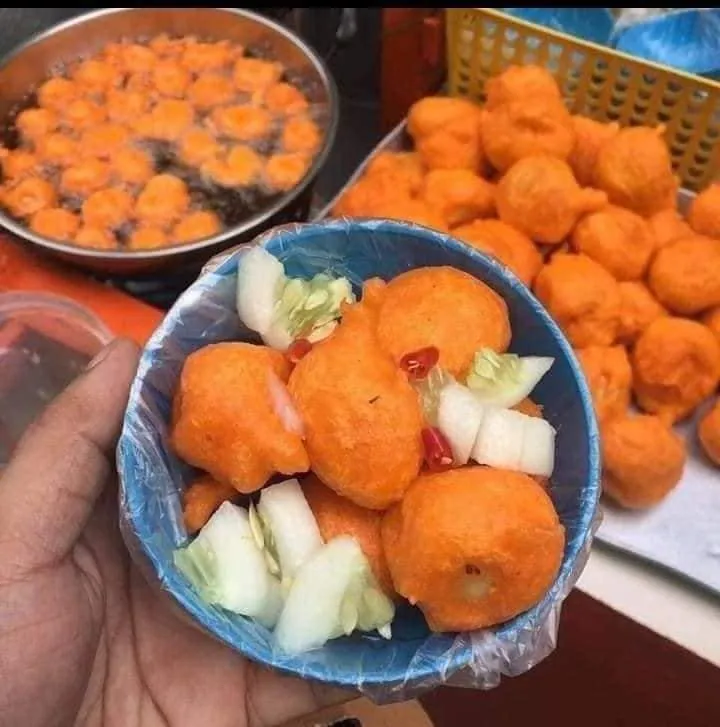
Sweet Treats on the Streets
Turon
Turon is a popular Filipino banana street food that combines the natural sweetness of bananas with the crispy goodness of a deep-fried spring roll. The main ingredients are ripe saba bananas and slices of jackfruit, which are rolled in a spring roll wrapper, coated in brown sugar, and then fried until golden brown. The result is a deliciously crispy exterior with a sweet and fruity filling.
Turon is widely available from street vendors and small food stalls throughout the Philippines. The best places to find turon are bustling local markets, roadside stands, and even school canteens. It is a favorite snack among Filipinos, cherished for its simplicity and satisfying flavor. The combination of caramelized sugar and the natural sweetness of the bananas makes turon a delightful treat that captures the essence of Filipino street food.
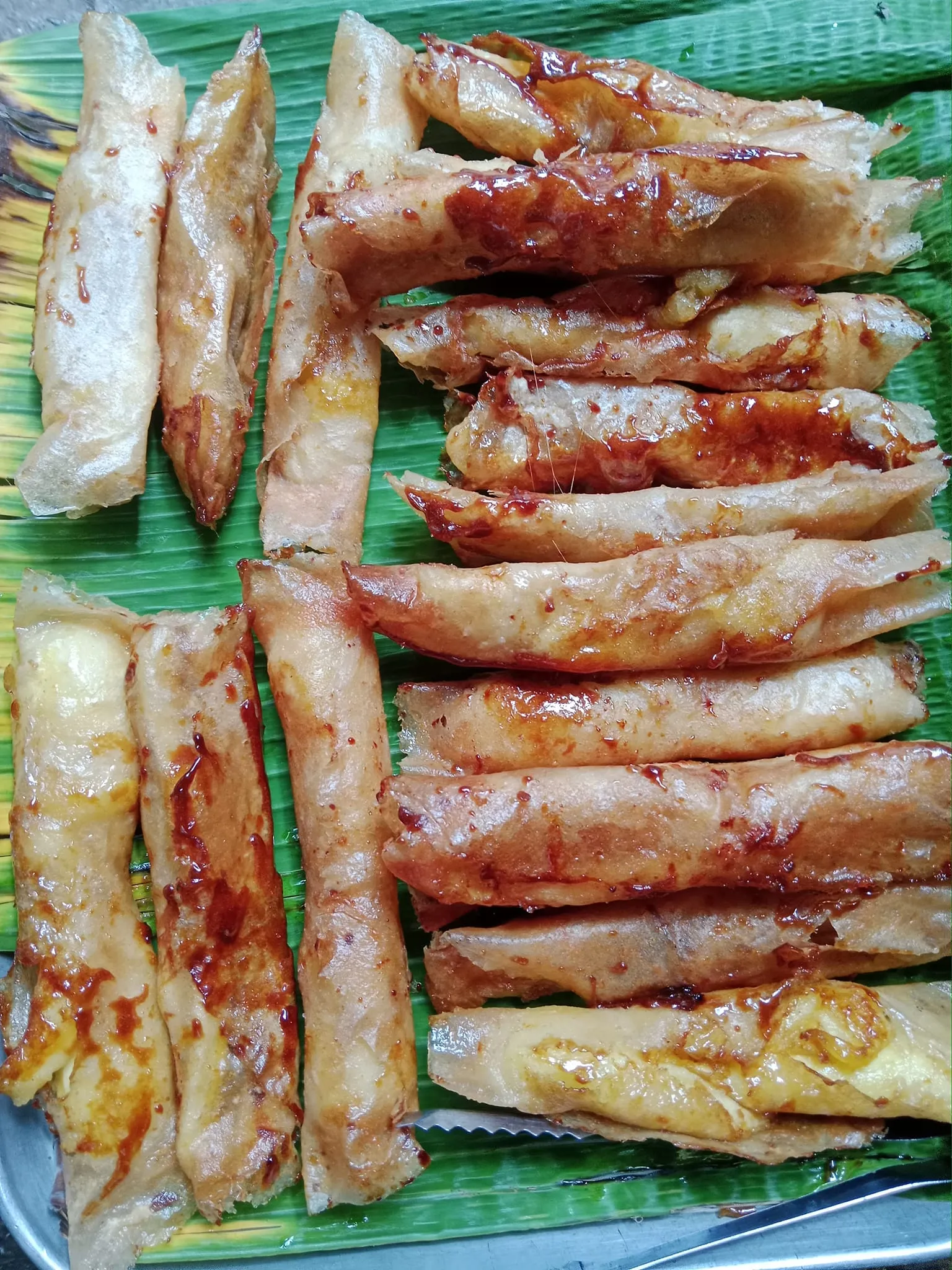
Banana Cue
Banana Cue is another beloved caramelized Filipino street food, known for its simple yet delicious preparation. This treat involves skewering ripe saba bananas, coating them in brown sugar, and then deep-frying them until the sugar caramelizes, creating a sweet and sticky glaze. The bananas are served on bamboo sticks, making them easy to eat on the go.
The preparation of Banana Cue is straightforward but results in a rich, caramelized flavor that appeals to both young and old. Its popularity among Filipinos stems from its affordability, availability, and the comfort it provides as a familiar snack. Banana Cue can be found in almost every corner of the Philippines, particularly in areas with high foot traffic such as markets, bus terminals, and near schools. Its irresistible combination of crispy, caramelized sugar and soft, sweet banana makes it a perennial favorite in the Filipino street food scene.
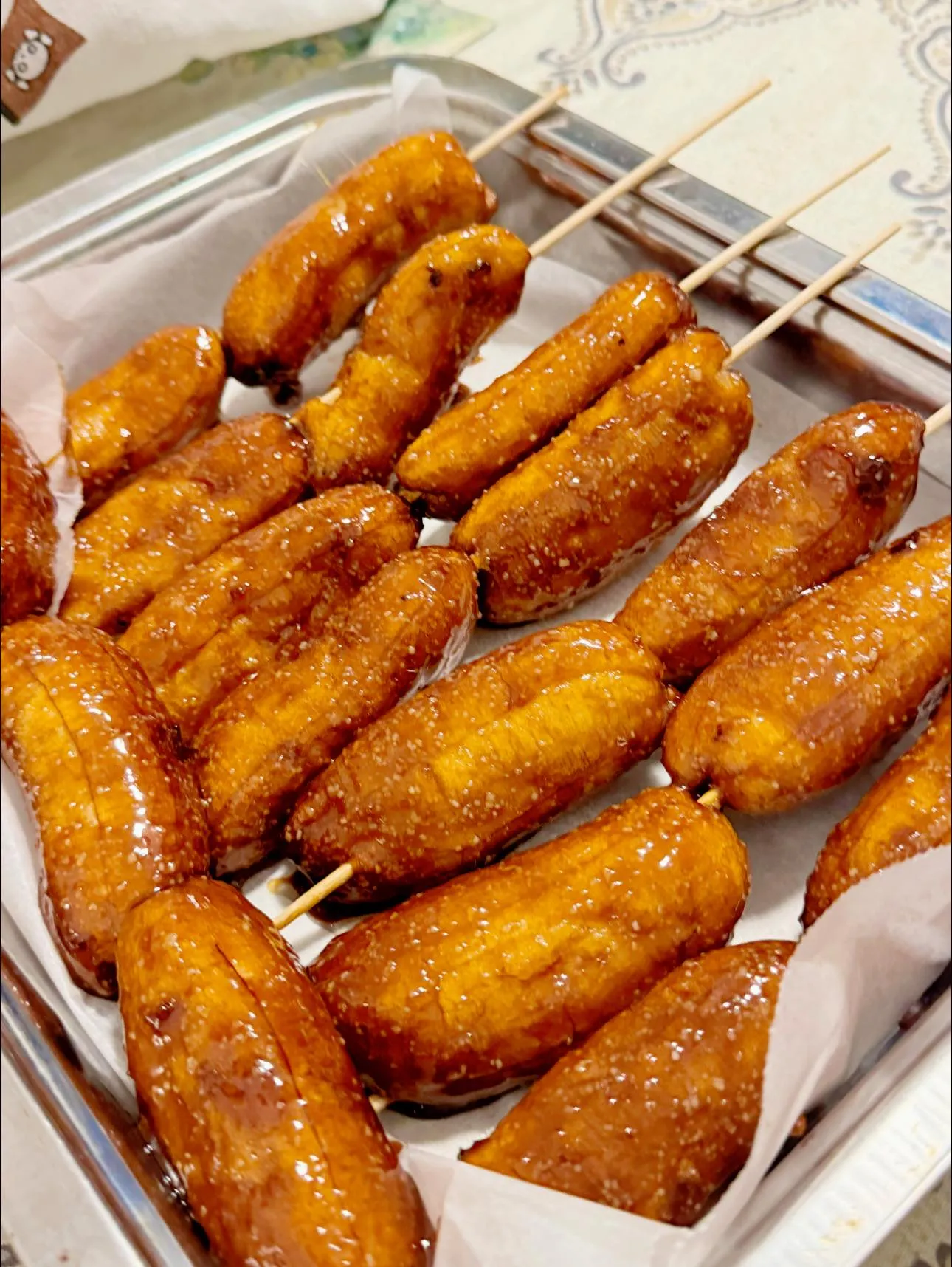
Ice Scramble
Ice Scramble is a refreshing Filipino street food dessert that is particularly popular during the hot summer months. This treat consists of shaved ice mixed with evaporated milk and vibrant pink food coloring, then topped with a variety of ingredients such as chocolate syrup, powdered milk, marshmallows, and candy sprinkles.
The appeal of Ice Scramble lies in its refreshing quality and the fun of customizing it with different toppings. It is a nostalgic treat for many Filipinos, reminiscent of childhood afternoons spent playing in the sun and cooling down with this icy dessert. Ice Scramble vendors are commonly found near schools, parks, and busy streets, offering a quick and delightful way to beat the heat. Its colorful presentation and sweet, creamy taste make Ice Scramble a standout in the world of Filipino street food desserts.
These sweet treats—Turon, Banana Cue, and Ice Scramble—highlight the diverse and delectable nature of Filipino street food. Each offers a unique taste experience that captures the essence of Filipino culinary creativity and the joy of indulging in simple, yet flavorful, street food delights.

Savory Filipino Street Food
Fish Balls
Fish Balls are a quintessential Filipino street food, made from a mixture of fish meat and flour, shaped into small balls, and deep-fried until golden and crispy. These Filipino street food fish balls are typically skewered on bamboo sticks and served with a variety of sauces and condiments that enhance their flavor.
The most common sauces served with fish balls include a sweet and spicy sauce, a tangy vinegar-based sauce with chopped onions and chili, and a thick, sweet brown sauce often made with soy sauce, sugar, and cornstarch. These sauces allow for a customizable taste experience, making each bite unique. Fish balls are widely available from street vendors, especially in busy urban areas, school vicinities, and local markets, where they are enjoyed as a quick and satisfying snack by people of all ages.

Siomai
Siomai, a popular Filipino dumpling street food, has its roots in Chinese cuisine. These savory dumplings are made with ground pork, shrimp, and various seasonings, then wrapped in wonton wrappers and steamed to perfection. Siomai is often garnished with a bit of grated carrot on top for color and added flavor.
The preparation of siomai involves mixing the filling ingredients thoroughly, wrapping them neatly, and steaming them until cooked. These dumplings are typically served with a dipping sauce made from soy sauce, calamansi (a local citrus fruit), and chili garlic oil, adding a burst of flavor to each bite. Siomai has become a staple in the Filipino street food scene due to its delicious taste, ease of preparation, and the influence of Chinese culinary traditions in the Philippines. It is commonly sold by street vendors and in food courts, where it is enjoyed as a snack or light meal.
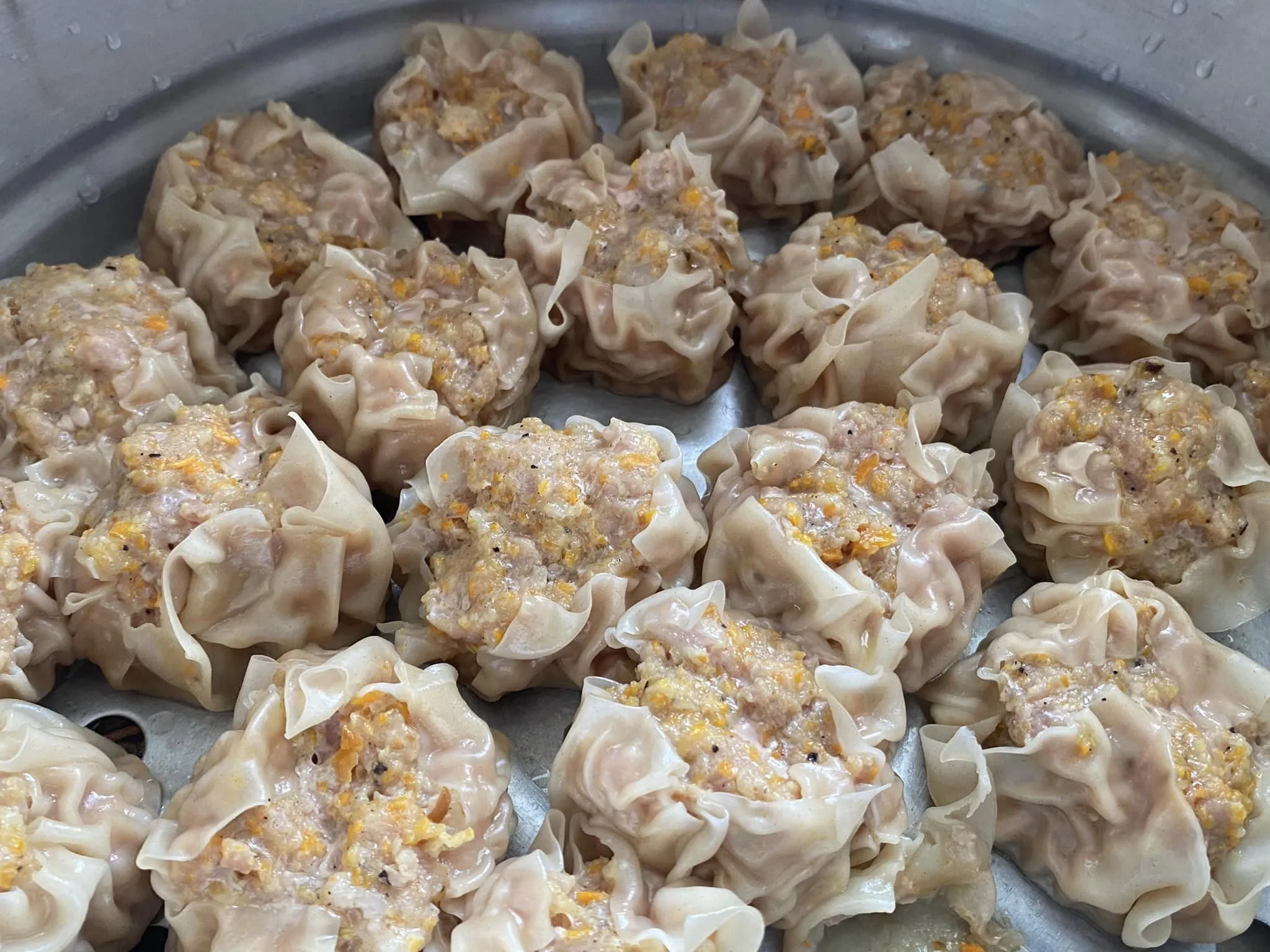
Taho
Taho is a beloved Filipino tofu street food, typically enjoyed as a breakfast option or a mid-morning snack. This comforting treat consists of silken tofu, sweet arnibal (a syrup made from caramelized sugar and vanilla), and chewy sago pearls (similar to tapioca pearls).
The process of making taho involves heating the silken tofu until it reaches a warm, custard-like consistency, then topping it with generous spoonfuls of arnibal and sago pearls. The combination of the soft, silky tofu, the sweet syrup, and the chewy pearls creates a delightful texture and flavor that many Filipinos find irresistible. Taho vendors are a common sight in residential areas, often calling out “Taho!” as they carry large containers of this sweet treat, making their way through neighborhoods to deliver fresh taho to eager customers. This traditional and healthy snack remains a cherished part of Filipino street food culture, offering a sweet start to the day.
These savory Filipino street foods—Fish Balls, Siomai, and Taho—each bring a unique flavor and experience to the Filipino street food scene. They exemplify the creativity and diversity of Filipino cuisine, making them must-try items for anyone exploring the rich world of Filipino street food.
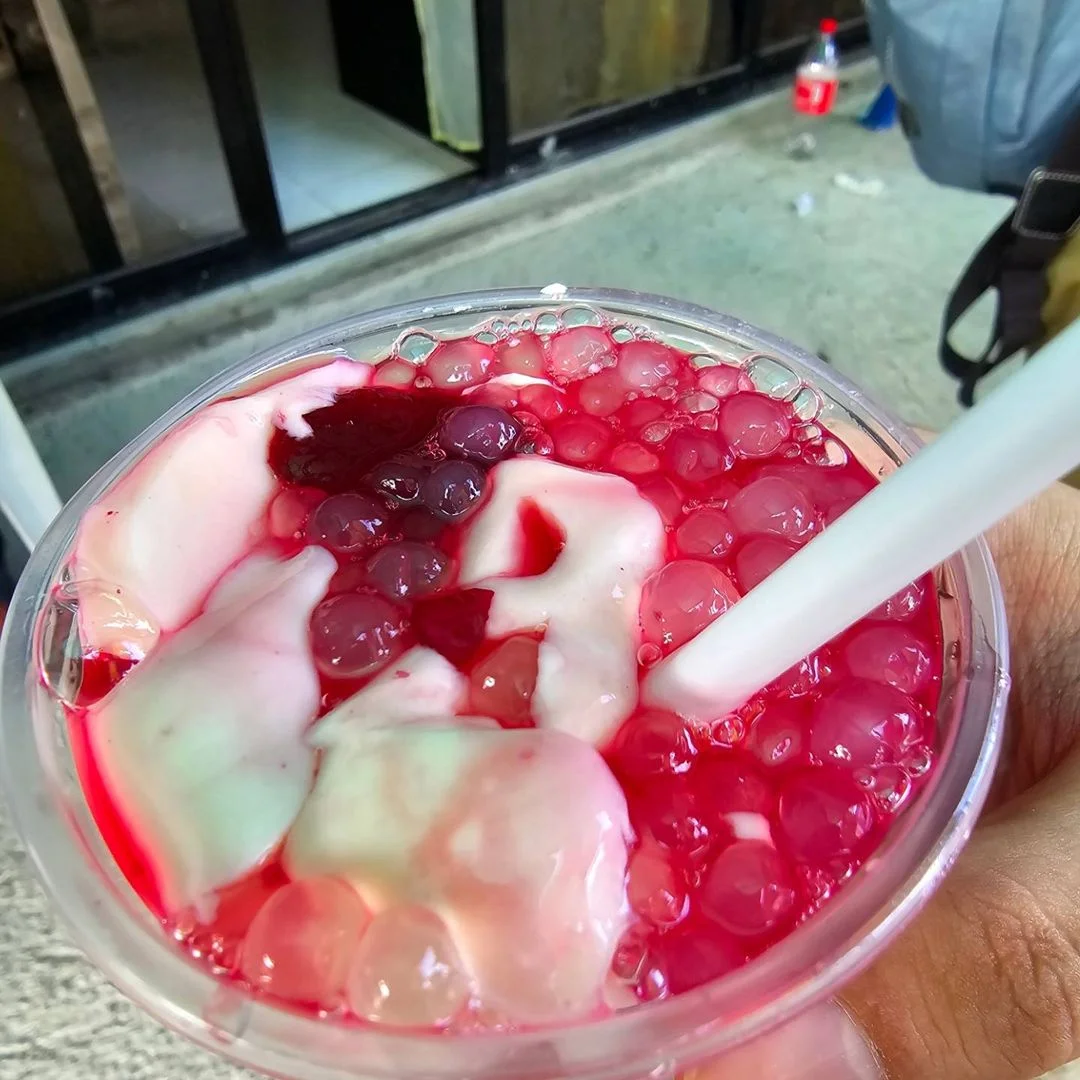
Regional Filipino Street Food
Piaya from Negros
Piaya is a delightful regional Filipino street food that hails from Negros Occidental, a province known for its sugar industry. This sweet pastry is made by flattening dough filled with muscovado sugar, then grilling it until it becomes crisp on the outside and gooey on the inside. Some variations also include fillings like ube (purple yam) or mango for added flavor.
The origins of piaya can be traced back to the influence of Chinese immigrants in the region, who brought their pastry-making skills and combined them with local ingredients. The unique flavor of piaya comes from the muscovado sugar, which provides a rich, molasses-like sweetness that complements the flaky pastry. Piaya is often enjoyed as a snack or dessert and can be found in local markets and pasalubong (souvenir) shops across Negros and other parts of the Philippines. Its distinct taste and cultural significance make piaya a beloved treat among Filipinos and a must-try for visitors.
Pastil from Mindanao
Pastil is a popular Mindanao Filipino street food, particularly in the provinces of Maguindanao and Cotabato. This dish consists of steamed rice topped with flavorful shredded chicken, beef, or fish, all wrapped in banana leaves. The meat is usually cooked with garlic, onions, soy sauce, and various spices, giving it a savory and aromatic flavor.
Pastil is typically served with a side of atchara (pickled papaya) or sometimes a hard-boiled egg, adding a refreshing contrast to the rich and savory meat. This street food is not only delicious but also convenient, as the banana leaf wrapper makes it easy to eat on the go. Pastil is commonly sold by street vendors and in local eateries, especially during breakfast and lunchtime. Its simplicity, affordability, and satisfying taste have made it a staple in Mindanao’s culinary scene.
Ilocos Empanada
Ilocos Empanada is a distinctive Ilocano Filipino street food that stands out from other empanadas due to its unique preparation and ingredients. This savory pastry is made from a dough of rice flour, which gives it a bright orange color and a crisp texture when fried. The filling typically includes grated green papaya, mung beans, and local longganisa (sausage), with a whole egg added for extra richness.
What sets Ilocos Empanada apart is its distinct flavor profile, which combines the savory, slightly sweet taste of the longganisa with the fresh, crunchy texture of the papaya and mung beans. The empanada is deep-fried until golden and crispy, then served hot with a side of spicy vinegar dipping sauce that enhances its flavors. This regional Filipino street food is particularly popular in the provinces of Ilocos Norte and Ilocos Sur, where it is sold in local markets, food stalls, and during festivals. The unique characteristics of Ilocos Empanada make it a beloved snack and a highlight of Ilocano cuisine.

Filipino Street Food Beverages
Sago’t Gulaman
Sago’t Gulaman is one of the most popular Filipino street food drinks, known for its refreshing and sweet flavor. This beverage is made from a combination of sago (tapioca pearls), gulaman (agar jelly), and a syrup made from caramelized brown sugar and pandan leaves. It is served over ice, making it a perfect thirst-quencher, especially on hot days.
The ingredients of Sago’t Gulaman include large sago pearls, which provide a chewy texture, and colorful gulaman cubes that add a delightful burst of sweetness. The syrup, infused with pandan leaves, gives the drink its distinctive aroma and flavor. This Filipino street food drink is not only tasty but also visually appealing, with the contrasting colors of the sago, gulaman, and syrup. Sago’t Gulaman is commonly sold by street vendors in plastic cups or bags, making it a convenient and affordable refreshment for people on the go.
Buko Juice
Buko Juice, a popular coconut Filipino street food drink, is made from the water of young coconuts. This natural beverage is not only incredibly refreshing but also packed with health benefits. Buko juice is rich in electrolytes, making it an excellent choice for rehydration. It also contains vitamins, minerals, and antioxidants that support overall health.
The refreshing qualities of buko juice come from its naturally sweet and slightly nutty flavor, which is best enjoyed chilled. Some vendors also add strips of tender coconut meat to the drink, enhancing its texture and nutritional value. Buko juice is widely available from street vendors, often served in the shell for an authentic and eco-friendly experience. Its natural, hydrating properties and delightful taste make buko juice a favorite among Filipinos and visitors alike.
Calamansi Juice
Calamansi Juice is a beloved Filipino citrus street food drink made from the small, green, and tart calamansi fruit. This drink is known for its unique taste, which combines the tanginess of lime with a hint of sweetness. Calamansi juice is often sweetened with sugar or honey and served over ice, making it a refreshing beverage perfect for the tropical climate of the Philippines.
The unique taste of calamansi juice comes from the fruit’s distinctive flavor profile, which provides a perfect balance of tartness and sweetness. This Filipino citrus street food drink is not only refreshing but also packed with vitamin C, which boosts the immune system and promotes healthy skin. Calamansi juice is a popular choice among street vendors and is commonly sold in plastic cups or bottles. Its invigorating taste and health benefits make it a staple in the Filipino street food beverage scene.
These Filipino street food beverages—Sago’t Gulaman, Buko Juice, and Calamansi Juice—each offer a unique and refreshing experience that complements the rich flavors of Filipino street food. They showcase the diverse and delicious ways Filipinos stay cool and hydrated, adding to the vibrant tapestry of the Philippines’ culinary culture.
Conclusion
The diversity and richness of Filipino street food are a testament to the Philippines’ vibrant culinary heritage. From the savory delights of fish balls and siomai to the sweet treats of turon and banana cue, Filipino street food offers a wide array of flavors and textures that cater to every palate. Regional specialties like Piaya from Negros, Pastil from Mindanao, and Ilocos Empanada showcase the unique tastes and traditions of different parts of the country. Refreshing beverages like Sago’t Gulaman, Buko Juice, and Calamansi Juice complement these delectable snacks, providing a full and satisfying street food experience.
Exploring Filipino street food is more than just a culinary adventure; it’s a way to immerse yourself in the culture and daily life of the Philippines. Whether you’re sampling exotic treats like balut or enjoying the comforting flavors of taho, each bite tells a story of tradition, creativity, and community. So, when you visit the Philippines, make sure to indulge in the incredible array of Filipino street food. It’s an experience that will delight your taste buds and leave you with lasting memories.
5 FAQs about Filipino Street Food
1. What is the most popular Filipino street food?
The most popular Filipino street food varies by region, but balut, fish balls, and siomai are among the top favorites nationwide. These snacks are widely available and loved for their unique flavors and accessibility.
2. Is Filipino street food safe to eat?
Filipino street food is generally safe to eat if you choose vendors who maintain good hygiene practices. Look for stalls with high customer turnover, as this usually indicates fresh food. It’s also a good idea to observe the cleanliness of the vendor’s equipment and the overall stall environment.
3. Where can I find the best Filipino street food in Manila?
In Manila, some of the best places to find Filipino street food include the neighborhoods of Binondo (Chinatown), Quiapo, and the bustling Ugbo Street Food. Night markets like the one in Mercato Centrale in Bonifacio Global City also offer a wide variety of delicious street food options.
4. What are some vegetarian options for Filipino street food?
Vegetarian options for Filipino street food include banana cue, turon, and taho. You can also find vegetable-based dishes like lumpiang gulay (vegetable spring rolls) and fresh lumpia (fresh vegetable spring rolls) at many street food stalls.
5. How much does Filipino street food typically cost?
Filipino street food is very affordable, with most items ranging from PHP 10 to PHP 50 (approximately $0.20 to $1.00 USD). More elaborate dishes or larger portions may cost slightly more, but street food remains an inexpensive way to enjoy a wide variety of flavors.
Exploring Filipino street food offers a delightful and affordable way to experience the rich culinary culture of the Philippines. Whether you’re a local or a visitor, the vibrant and diverse world of Filipino street food is sure to provide an unforgettable gastronomic adventure.


